As our climate appears to be warming up, more and more areas are able to grow citrus trees. To get the best from citrus trees, it’s always good to companion plant and benefit from better pollination and insect control. As you will see companion planting citrus with other semi tropical plants is most beneficial, and as these plants are now easy to obtain it makes sense to apply this method.
What Is Citrus?

When I refer to citrus in this post I’m talking about all members of the citrus family. This includes:-
- Oranges
- Lemons
- Limes
- Grapefruit
- Pomelo
- Tangerines
- Kumquat
For more information on the citrus family tree go to The National Geographic post by following this link. It will not be possible to grow all of the plants featured in this post unless you are in a tropical location. Certainly not in the UK at least, but, it is possible to grow cold hardy citrus.
Here is a link to cold hardy citrus from citrus friends Europe, and this gives more information on varieties of cold hardy citrus. So now we have the basics covered, let’s look at companion planting citrus.
Companion Planting Citrus
The majority of plants grown on planet earth benefit from being grown in companion to other species. Citrus is no different, and the following are the most relevent citrus companion plants.
Live Oak (Quercus Virginiana)

These are a type of oak tree that doesn’t shed it’s leaves in Winter, and only sheds them in Spring to allow new growth. Peculiar to the Southern states of the USA, and as the latin name suggests, mainly Virginia. These trees would not be very helpful below temperate zone 8 (UK h4-h5) the RHS has more information.
Live oaks might not be suitable for all, and they do grow to a large size, but citrus trees are protected by them. However, if these are not a good fit for your garden or orchard, there are many more plants to choose from. Let’s deal with the rest of the temperate plants first.
Rubber Tree (Hevea brasiliensis)

Only able to be grown in zones 10-11 which means they will only survive temperatures down to -1C (30.2F) and therefore not suitable for growing in the UK. If you do live in an area where growing rubber trees is possible, your citrus will benefit from the protective qualities of this magnificent tree.
Guava (Psidium guajava)
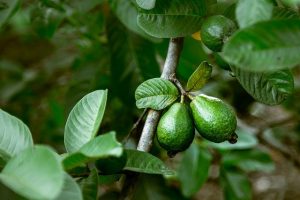
Grown mainly in tropical zones, there are varieties of guava that can withstand zone 9. This means the plants can survive with temperatures down to -6.7C (19.94F) and so would do well in many places. Growing guava in companion with citrus affords the citrus some decent protection.
What To Grow With Citrus
It is not recommended to grow anything inside the dripline of citrus tree, because the thick leaf canopy will block light and moisture. Outside the dripline however, is another matter, and there are many companion plants for citrus. Let’s get started with common citrus companion plants.
Citrus Trees

As long as a reasonable distance is allowed for each plant, other citrus make great companion plants for citrus.
Parsley

Companion planting parsley with citrus trees and allowing the parsley to flower, will attract many beneficial insects. Including pollinators and predators all very beneficial to citrus trees.
Chervil
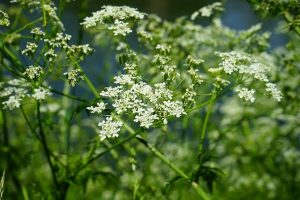
This herb will also attract many useful insect allies including ladybirds (ladybugs) and lacewings.
Mint
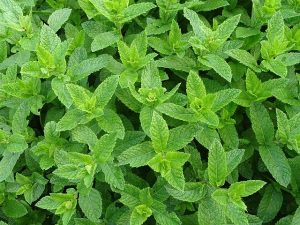
Although it can become invasive and therefore a pest, mint will attract many beneficial insects, both predators and pollinators.
Asters

These pretty little flowers, attract many useful pollinators, and these will help to pollinate your citrus trees.
Dill
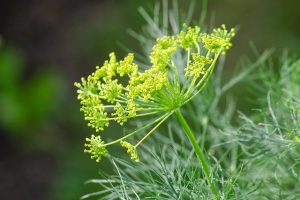
Another useful herb, dill once in flower will attract many predator insects that will prey on the pests. Including parasitic wasps and also pollinators.
Rosemary

As citrus and rosemary both enjoy fairly arid conditions, they make great companion plants. Rosemary also attracts many beneficial insects including pollinators and predators.
Thyme
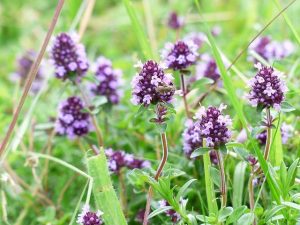
Another Mediterranean herb, thyme enjoys similar growing conditions to citrus trees, and makes an excellent companion. Bees and hoverflies are attracted to thyme and these will help pollinate your citrus trees.
Basil
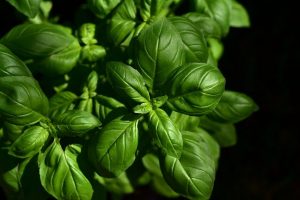
One more mediterranean herb that will be happy growing in similar conditions to citrus is basil. This plant will keep away aphids and other pests and improve the health of your citrus.
Yarrow
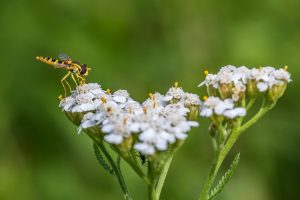
Hoverflies are attracted to yarrow, and hoverflies prey on mealy bugs that are a particular nuisance to citrus trees.
Borage
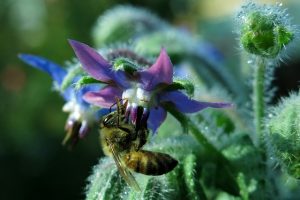
Every garden should have at least one borage plant. It attracts beneficial insects including pollinators and predators. Borage also improves the health of all plants growing in it’s area.
Petunias

These pretty flowers that are available in many colours and combinations, make great citrus companion plants. They are known to repel aphids, and also attract many beneficial pollinators.
Calendula

The pot marigold or common marigold attracts many good pollinators including bees, butterflies and hoverflies. This makes them good companion plants for citrus trees, however, they also are attractive to slugs and aphids.
Marigolds

French or African marigolds make great companion plants for citrus trees, as they not only attract many pollinators, but also repel nematodes. These eelworms can damage roots and eventually kill trees. Growing marigolds will repel these pests, for more on marigold companion plants click here.
What Not To Grow With Citrus
To understand what not to grow with citrus, you need to know how citrus grows. The trees roots are fairly shallow and prefer reasonably dry soil conditions. This limits what can be grown around the trees.
Also another point to consider, is mulching can be detrimental to citrus trees. This is because it traps moisture in the upper root area and this allows pathogens to develop.
Root Crops And Citrus

Due to the way citrus trees grow, it is not advisable to grow root crops near citrus trees. This is because the citrus roots would probably be damaged when harvesting root crops. Root crops include:-
- Carrots
- Onions
- Leeks
- Parsnips
- Beetroot
Container Citrus Companion Planting

Many of the plants mentioned above can be grown with citrus growing in pots. In the UK it’s best to grow citrus in containers, and preferably dwarf varieties. These can be moved indoors or into a greenhouse when frosty weather is forecast.
Pay particular attention to drainage when growing citrus in containers. Also the plants will need a citrus specific plant food as container plants use up nutrients faster than those growing in the ground.
Be aware of root growth and up plant when necessary. Although they are classed as dwarf, most dwarf citrus will still grow to around 10 foot (3 metres) tall. Also, they are often sold as indoor plants, but all citrus grows better outdoors.
Having said that, growing citrus as patio plants can be a successful way of growing citrus in less temperate areas. Plus a small rubber tree plant could easily be added to the container or a guava even.
Other Considerations For Pot Grown Citrus
Citrus trees are quite fussy when it comes to watering, too much or too little can kill them. That’s why adequate drainage is essential. As is food, citrus need many nutrients so a citrus specific feed is necessary.
Keep citrus protected from draughts or strong winds and don’t forget to give them some water during winter months. Before moving citrus indoors for winter, they should spend a couple of weeks outdoors but under an awning. Likewise before moving them outdoors for Summer do the same, this is to aclimatise them.

